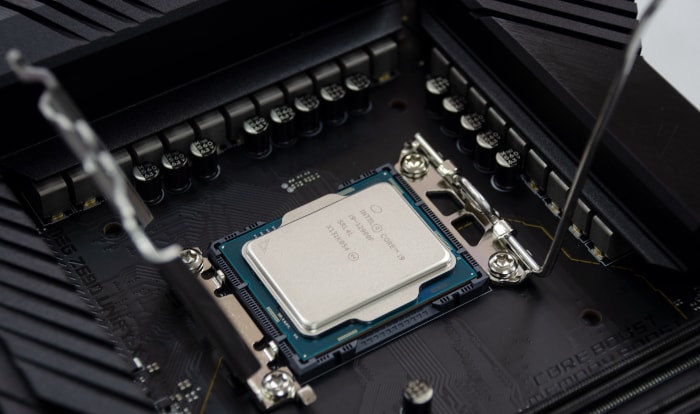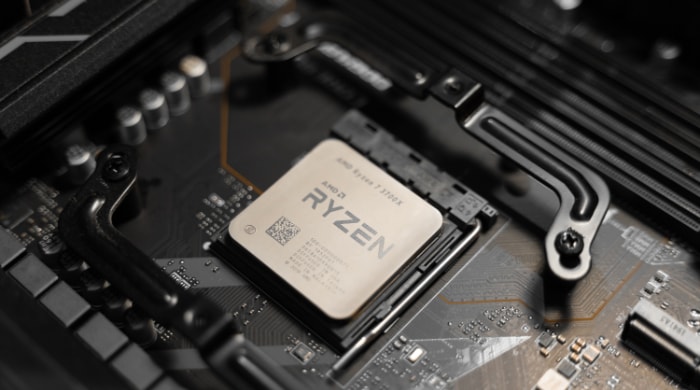Can I Upgrade CPU Without Changing Motherboard?

Upgrading your computer’s CPU can feel like a tech puzzle. You’re ready to boost your machine’s performance, but there’s a catch: can you do it without swapping out the motherboard too? This question is crucial for anyone looking to enhance their computer’s capabilities while keeping an eye on budget and technical feasibility.
Our journey through this guide will unravel the mysteries of CPU and motherboard compatibility, ensuring you’re armed with the knowledge to make informed decisions.
From understanding the nuances of sockets and chipsets to evaluating the real benefits of upgrading, we’ve got you covered.
CPU and Motherboard Compatibility Basics
Upgrading your computer’s CPU isn’t as simple as just picking the fastest one on the market. It’s about finding the right match for your motherboard.
Understanding CPU Sockets
Every CPU connects to the motherboard through a specific socket type. This socket is essentially the physical interface between the processor and the motherboard.
Different CPU models and generations often require different sockets. For example, Intel and AMD, the two major CPU manufacturers, have their own unique socket designs that are not interchangeable.
Chipset Compatibility and Its Role
The chipset on a motherboard acts like a traffic director, managing data flow between the CPU, memory, and other hardware components. Each chipset is designed to work with a specific range of CPUs.
It’s crucial to ensure that your CPU is compatible with your motherboard’s chipset. This compatibility determines not just if the CPU will fit, but also if it will work efficiently with the motherboard’s other components.
BIOS/UEFI Firmware and CPU Support
The motherboard’s BIOS (Basic Input/Output System) or UEFI (Unified Extensible Firmware Interface) is the low-level software that starts up your computer. It also plays a critical role in CPU compatibility.
Some CPUs might require a BIOS/UEFI update to be recognized by the motherboard. It’s important to check if your motherboard’s firmware supports the CPU you’re planning to upgrade to.
The Importance of Research and Compatibility Lists
Motherboard manufacturers often provide detailed compatibility lists on their websites. These lists can be invaluable resources, indicating which CPUs are supported by which motherboards.
Before deciding on a CPU upgrade, consulting these lists can save you from compatibility headaches.
Identifying Your Current Motherboard and CPU Specifications
Before considering a CPU upgrade, it’s essential to know what you’re working with. Identifying the specifications of your current motherboard and CPU lays the groundwork for understanding what upgrades are possible.
This process might sound technical, but with the right tools and steps, it’s quite straightforward.
How to Find Your Motherboard Model
Your motherboard’s model number is the key to unlocking a wealth of information about its capabilities and compatibility. There are several ways to find this information:
- Checking System Information in Windows: Press Win + R, type msinfo32, and hit Enter. This opens the System Information window, where you can find your motherboard model listed under “BaseBoard Model” or “System Model.”
- Using a Third-Party Software: Programs like CPU-Z provide detailed information about your motherboard, CPU, and other hardware components.
- Physical Inspection: If you’re comfortable opening your computer case, the motherboard model is often printed directly on the board.
Determining Your Current CPU
Knowing your current CPU is just as important as knowing your motherboard model. Here’s how you can find out:
- Through the System Information Window: Just like finding your motherboard model, you can use the System Information window in Windows. Look for the “Processor” entry.
- Using CPU Identification Utilities: Applications like CPU-Z not only provide detailed information about your motherboard but also give comprehensive details about your CPU, including its model, core count, and clock speed.
The Importance of Documenting Your Hardware
Once you’ve identified your motherboard and CPU, it’s a good idea to document this information. Keep a record of the model numbers and any other relevant specifications.
This information will be crucial when researching compatibility for potential upgrades.
Understanding CPU Upgrade Limitations
Upgrading your CPU can significantly boost your computer’s performance, but it’s not always as straightforward as plugging in a new processor. Several limitations and factors can influence whether a CPU upgrade is feasible or not.
Being aware of these limitations is crucial in making a smart and effective upgrade decision.
Physical Limitations: Socket Types and Chipset Compatibility
One of the most basic constraints is the physical compatibility between the CPU and the motherboard. This includes:
- Socket Type: The CPU must fit into the motherboard’s socket. Different generations and brands of CPUs have different socket requirements, and these are not universally compatible.
- Chipset Compatibility: The motherboard’s chipset, which controls communication between the CPU, memory, and other components, must support the new CPU. Even if the CPU fits physically, it won’t work properly if the chipset doesn’t support it.
BIOS/UEFI Firmware Considerations
The motherboard’s firmware, known as BIOS (Basic Input/Output System) or UEFI (Unified Extensible Firmware Interface), is also a critical factor. Some key points include:
- Firmware Updates: To support newer CPUs, motherboards often require a firmware update. Without the latest BIOS/UEFI version, the new CPU may not be recognized.
- Compatibility Lists: Manufacturers typically release lists of CPUs supported by specific BIOS/UEFI versions. It’s essential to check these lists before proceeding with an upgrade.
Performance Bottlenecks and Other Hardware
A new CPU doesn’t always guarantee better performance. Other factors can create bottlenecks:
- RAM Compatibility and Speed: Your computer’s RAM (Random Access Memory) needs to be compatible with the new CPU for optimal performance.
- Graphics Card and Other Components: In some cases, other components like the graphics card may also need to be upgraded to avoid bottlenecks and fully utilize the new CPU’s capabilities.
Evaluating the Age and Condition of Your Motherboard
An often-overlooked aspect is the age and condition of your existing motherboard:
- Technological Advances: Over time, new technologies and standards emerge. An older motherboard may not support these even with a CPU upgrade.
- Wear and Tear: The physical condition of the motherboard can affect its ability to support a new CPU. Worn or damaged components may lead to instability or failure.
Assessing Performance Gains and Cost-Effectiveness

When you’re looking to upgrade your CPU, it’s not just about making your computer faster. It’s also crucial to consider whether the performance gains justify the cost.
Evaluating Potential Performance Improvements
Upgrading your CPU can lead to noticeable improvements in your computer’s speed and ability to handle tasks. Here’s what to consider:
- Speed and Core Count: Newer CPUs generally offer higher clock speeds and more cores, which can significantly improve multitasking and performance in demanding applications.
- Benchmark Comparisons: Compare the benchmarks of your current CPU with potential upgrades to get a concrete idea of the performance improvements you can expect.
- Specific Needs: The benefits of a CPU upgrade can vary depending on your usage. Gamers, video editors, and software developers might see more significant gains compared to average users.
Comparing Costs: CPU Upgrade vs. Complete Replacement
Understanding the costs involved is critical. This involves:
- Cost of the CPU Alone: Research the prices of compatible CPUs and compare them with your current model.
- Additional Upgrades: Sometimes, a new CPU may necessitate additional upgrades (like faster RAM or a new cooling system), which add to the overall cost.
- Cost of a New System: In some cases, replacing the entire system might be more cost-effective, especially if your motherboard and other components are outdated.
Long-Term Benefits vs. Short-Term Costs
Consider the long-term benefits of the upgrade:
- Future-Proofing: A newer CPU can extend the lifespan of your computer, delaying the need for a complete system overhaul.
- Energy Efficiency: Newer CPUs are often more energy-efficient, potentially reducing electricity costs in the long run.
Risk vs. Reward: Is the Upgrade Worth It?
Weighing the risks against the potential rewards is essential:
- Compatibility Risks: Ensure that the new CPU is fully compatible and won’t lead to stability issues.
- Warranty and Support: Consider the warranty of the new CPU and the support available.
Practical Steps for a CPU Upgrade
Deciding to upgrade your CPU is just the beginning. The next step is the actual process of upgrading, which involves several important stages.
From preparing your system to the physical installation of the new CPU, each step must be approached with care and precision.
Pre-Upgrade Checklist
Before you start, it’s essential to prepare:
- Compatibility Confirmation: Double-check the compatibility of the new CPU with your motherboard’s socket and chipset.
- Firmware Update: Ensure that your motherboard’s BIOS/UEFI is updated to the latest version that supports the new CPU.
- Tools and Materials: Gather the necessary tools, like screwdrivers, and materials, such as thermal paste and an anti-static wristband.
Safely Removing the Old CPU
Handling computer components requires caution:
- Power Down and Unplug: Turn off your computer, unplug it, and ground yourself to prevent static damage.
- Accessing the CPU: Open your computer case and carefully remove any components that obstruct access to the CPU, like the CPU cooler or RAM.
- CPU Removal: Release the CPU from its socket by gently lifting the lever and carefully lifting the CPU out.
Installing the New CPU
The installation process is critical:
- Inspect and Align: Check the new CPU for any damage and align it correctly with the socket, noting the orientation markers.
- Secure the CPU: Gently place the CPU into the socket and lower the lever to secure it.
- Apply Thermal Paste: If your CPU cooler doesn’t have pre-applied thermal paste, apply a small amount onto the CPU.
Reassembling and Testing
Once the CPU is installed, it’s time to put everything back together:
- Reattach the CPU Cooler: Secure the cooler back onto the CPU. Ensure it’s properly seated to avoid overheating.
- Reconnect Components: Reinstall any components you removed during the process.
- Power On and Test: Turn on your computer and check the BIOS/UEFI to ensure the new CPU is recognized. Monitor the system’s temperature and performance.
Post-Upgrade Considerations
After the upgrade, keep these points in mind:
- System Stability: Run your computer for a few days to ensure there are no stability issues.
- Performance Benchmarking: Conduct performance tests to compare the new CPU’s performance with your previous setup.
Conclusion
Upgrading your CPU without a motherboard swap is a feasible but intricate task. It demands a good grasp of hardware compatibility, careful assessment of your current system’s capabilities, and a thorough evaluation of the cost versus performance benefits.
Each step, from confirming compatibility to the actual upgrade process, is crucial for success. While challenges exist, the potential performance boost can make this endeavor worthwhile.
This upgrade not only enhances your computer’s capabilities but also offers valuable insights into its inner workings. With the right approach and attention to detail, you can effectively revitalize your system, tailoring it to meet your specific computing needs.


